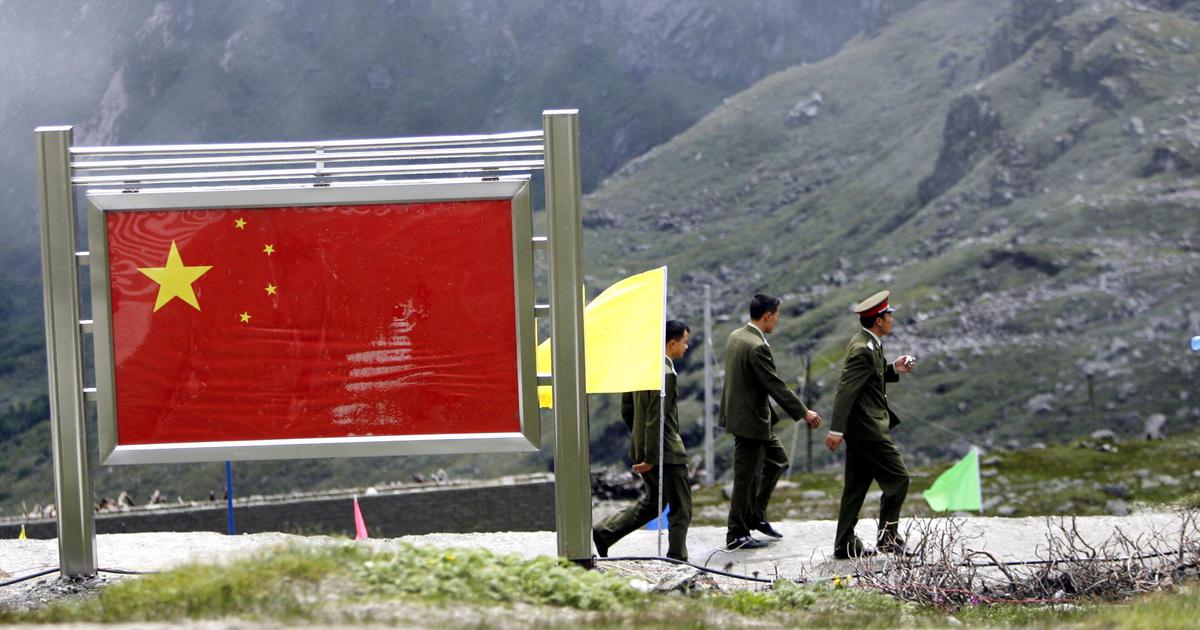Chinese village near Doklam plateau now completely inhabited: Report
India’s external affairs ministry said the government keeps an eye on all developments that have a bearing on national security and takes measures accordingly.

A Chinese village built 9 kilometres to the east of the Doklam plateau is now completely inhabited, NDTV reported on Wednesday.
The channel, citing satellite imagery from United States-based firm Maxar Technologies, reported that cars could be seen parked at nearly every doorstep in the village – which China calls Pangda. The village lies in Bhutanese territory.
The Doklam plateau, near the India-Bhutan-China tri-junction, was the site of a 74-day-long standoff between Indian and Chinese troops in 2017.
Alongside the Pangda village is an all-weather carriageway that goes 10 kilometres into Bhutan’s territory along the banks of the Amo Chu river. Construction along the river could help Chinese forces gain access to a strategically important ridge in the Doklam plateau, according to NDTV.
Will share more images soon - but as we talk about Ladakh, let us not neglect what China is doing in the Amo Chu river valley adjacent to Doklam.
— Vishnu Som (@VishnuNDTV) July 19, 2022
Pics Expose China's Inroads Near Doklam - Bid To Bypass Indian Defences? 📸: @Maxar https://t.co/Xetr7VncGn via @ndtv
Such access could give China a direct line of sight to the Siliguri corridor, the channel reported. The Siliguri corridor, commonly known as the “chicken’s neck”, is a stretch of about 22 kilometres that connects the northeastern states with the rest of the country through West Bengal’s Siliguri city.
The satellite images also reportedly show that another village in the Amo Chu river valley is nearly complete and that Beijing has increased the pace of construction on a third habitation further south in the valley.
On Thursday, Ministry of External Affairs spokesperson Arindam Bagchi, responding to a question about the construction at a press conference, said that the government keeps an eye on all developments that have implications for national security and takes measures accordingly, PTI reported.
On November 17, photos posted by satellite imagery expert Damien Symon showed that China was constructing multiple villages spread out over 100 square kilometres (over 24,700 acres) in Bhutan.
“Disputed land between Bhutan and China near Doklam shows construction activity between 2020-’21, multiple new villages spread through an area roughly 100 km² now dot the landscape, is this part of a new agreement or enforcement of China’s territorial claims?” he had said.
Disputed land between #Bhutan & #China near Doklam shows construction activity between 2020-21, multiple new villages spread through an area roughly 100 km² now dot the landscape, is this part of a new agreement or enforcement of #China's territorial claims ? pic.twitter.com/9m1n5zCAt4
— Damien Symon (@detresfa_) November 17, 2021
Soon after New Delhi and Beijing agreed to disengage in Doklam in 2017, China started building a military complex that can accommodate its troops and helipads.
In January 2018, India dismissed news reports of Chinese forces building a military complex in the region.









